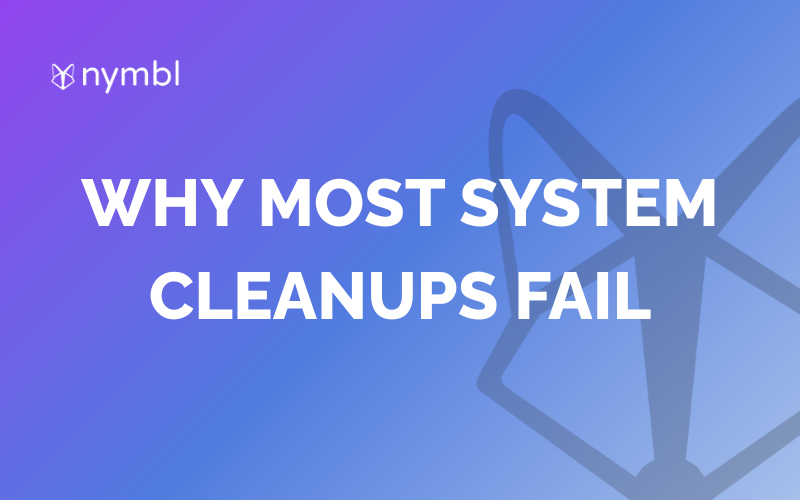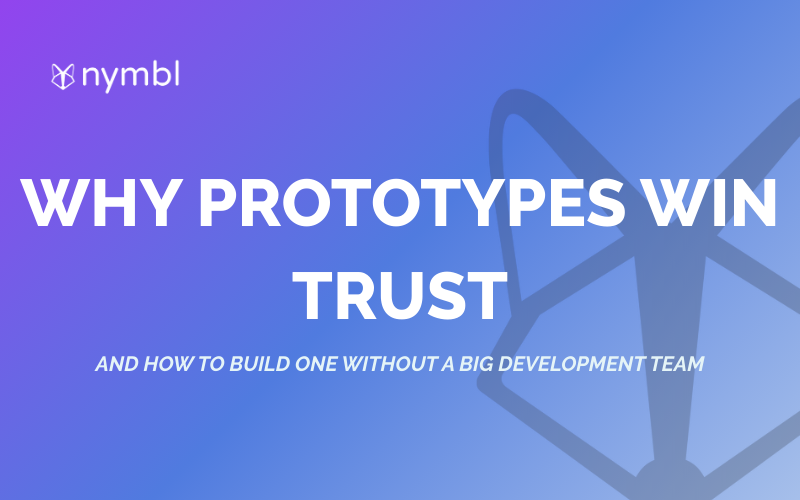Leveraging AI in app development has been a trending topic nowadays. In an article we recently shared, we explored the potential of AI integrations in both web and mobile apps . To help businesses embrace innovation even more, we are sharing the success stories from our recent webinar held via Zoom on March 2024, highlighting the various companies assisted by AI.
Nymbl's Impact on AI-Powered Companies
At our core, Nymbl specializes in enterprise app and web development. However, we've also played a pivotal role in fostering innovation among numerous ventures, empowering businesses to harness the potential of AI. Here's a glimpse at some of the companies we've collaborated with.

(Learn about our proven success in AI implementation and how we can help you here.)
What was discussed during the webinar?
Our webinar, held last March 21st, 2024, was led by Nymbl CEO and co-founder Martyn Mason, alongside experts Zach Chaitman and Zach Barrett, who dove into the transformative power of AI in application development. Discussions centered around low-code/no-code platforms, AI integration strategies, and real-world enterprise applications. Highlights also included live demos on retrieval augmented generation (RAG), optical character recognition (OCR) enhancements, and empowering developers for increased productivity.
From AI-driven sales training to efficient RFP responses and OCR advancements, Nymbl shared insights on how AI is revolutionizing enterprise application development and data security. The session was extremely helpful especially to those looking to harness AI's potential within their business operations, offering insights into prompt engineering, data governance, and the future of application development accelerated by AI.

Use Case 1: Retrieval-Augmented Generation (RAG)
Martyn’s discussion focused on the RAG (Retrieval-Augmented Generation) concept, which involves wrapping inputs around a well-engineered prompt to enhance responses. RAG allows users to supply their own data, typically in the form of files like PDF documents, to create customized responses. These responses are augmented by AI, particularly large language models like OpenAI's GPT, which process the input data, perform searches, synthesize information, and summarize it to provide better responses. The integration of RAG with various data sources, including cloud systems and on-premise systems, enables businesses to build applications that offer structured and tailored responses to user queries. In addition, he noted considerations such as information security, data governance, and data quality which are crucial when implementing RAG models, especially in enterprise environments.
Use Case 2: Optical Character Recognition (OCR)
The discussion, led by Zach, centers around Optical Character Recognition (OCR) and its evolution with the integration of AI, particularly in use cases like document processing. OCR traditionally involves hardware, like scanners, and software to convert images of text into digital, analyzable formats. However, with AI, OCR has advanced to Intelligent Character Recognition (ICR), improving accuracy, flexibility, and data structure. This integration of AI enhances OCR's capabilities, allowing it to adapt to various formats, languages, and styles, and to extract structured data for further processing. Use cases range from automating data entry and indexing documents to streamlining workflows in accounts payable and other sectors. The webinar demonstrated how AI-enhanced OCR can reduce manual efforts, minimize errors, and enhance efficiency across business processes, presenting a glimpse into the broader impact of AI integration in existing technologies.
Use Case 3: Developer Empowerment
In the final demo, Zack discussed an important topic surrounding developer empowerment. The utilization of AI tools has become indispensable in enhancing the efficiency and productivity of development teams across various stages of software development. From accelerating the delivery process to refining code quality and even facilitating QA testing, AI is revolutionizing the way developers, solution architects, and QA teams operate. By employing AI-driven solutions like PBT (Prompt-Based Testing), developers can generate detailed user stories efficiently, while also leveraging AI for tasks such as testing data generation and code review.
Furthermore, AI assists in the development of SQL queries, code generation, and even the creation of workflows, streamlining the development process across different platforms. Whether it's through low-code platforms like Flutterflow or full-stack development with GitHub Co-pilot, AI aids in creating dynamic components and generating test cases, thereby optimizing development workflows and enabling developers to focus on high-value tasks. However, it's crucial to recognize that AI serves as a tool, not a crutch, requiring collaboration between developers and AI to shape its capabilities effectively. As developers continue to harness the potential of AI, they pave the way for further advancements in software development, driving innovation and efficiency in the industry.
Some key questions from the webinar
Q: How can I ask a question to the RAG and get the response based on the latest version of the information from the share point?
A: You can ask an RAG enabled Chatbot and send the meta data along with the data of the PDF and it will be smart enough to use the latest version
Q: How can sales and marketing teams take advantage of AI/Chatgpt?
A: Some of our clients use AI for Sales Training as well. We created a platform with sales scripts, where the sales teams can record their practice pitches. Once they complete their pitch, AI analyzes the pitch for certain keywords. AI will provide feedback on the pitch and recommend improvements to the sales team. This is a great example of taking voice, comparing the recording to text and utilizing AI to compare.
Q: What industry do you see AI / RAG impacting the most?
A: It’s gonna impact nearly every industry, probably the ones that are leading the way or any scenarios where there's a lot of text context being generated today, like the media industry, or anywhere content is collected and ingested by AI. But we’ll see that in the next 6 months.
What are the takeaways from the webinar?
The Nymbl team explored the transformative impact of AI in application development, highlighting increased productivity, accelerated market entry, and enhanced developer empowerment. The integration of low-code, no-code technologies, and AI components emerges as a pivotal advancement, driving rapid development and innovation. For CIOs and CEOs, data security will be a hot topic for the enterprise. AI is definitely powered through better data quality. This will require more data preparation, governance, and refinement. The burgeoning field of prompt engineering, underscoring AI's role in refining output through natural language inputs without coding is one of the key takeaways as well in this webinar.
Our tech leaders foresee a surge in demand for application development driven by AI advancements. They anticipate that AI will elevate the return on investment for custom app development, a prospect that our team eagerly anticipates in the months ahead.
You can check out our Events page here to watch the recording of the webinar.
Nymbl is a leading advisory and development agency experienced in application and web development using low code no code tools. If you’re interested to learn more about RAG and how it can potentially shape your business, contact us here.






.png)


